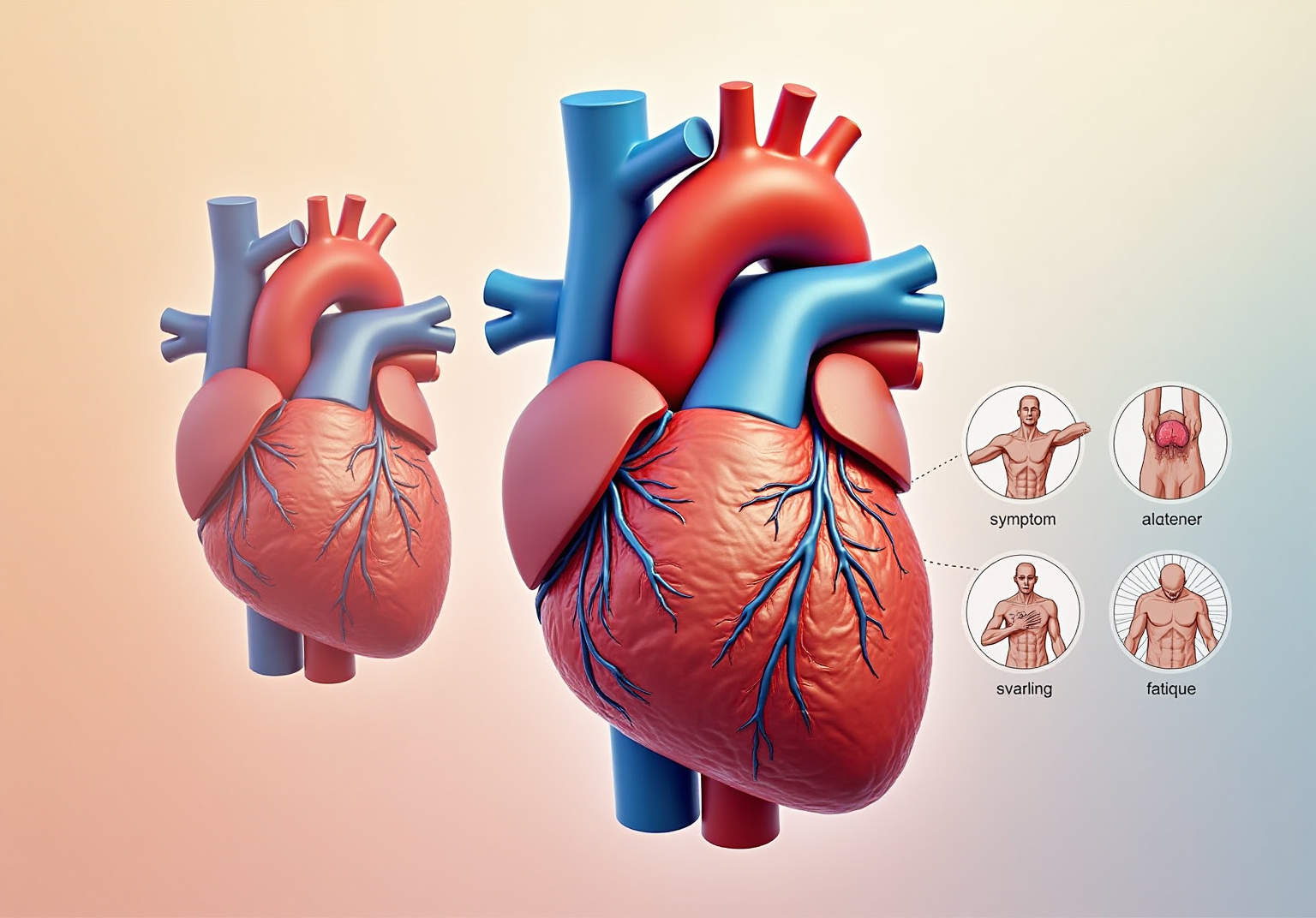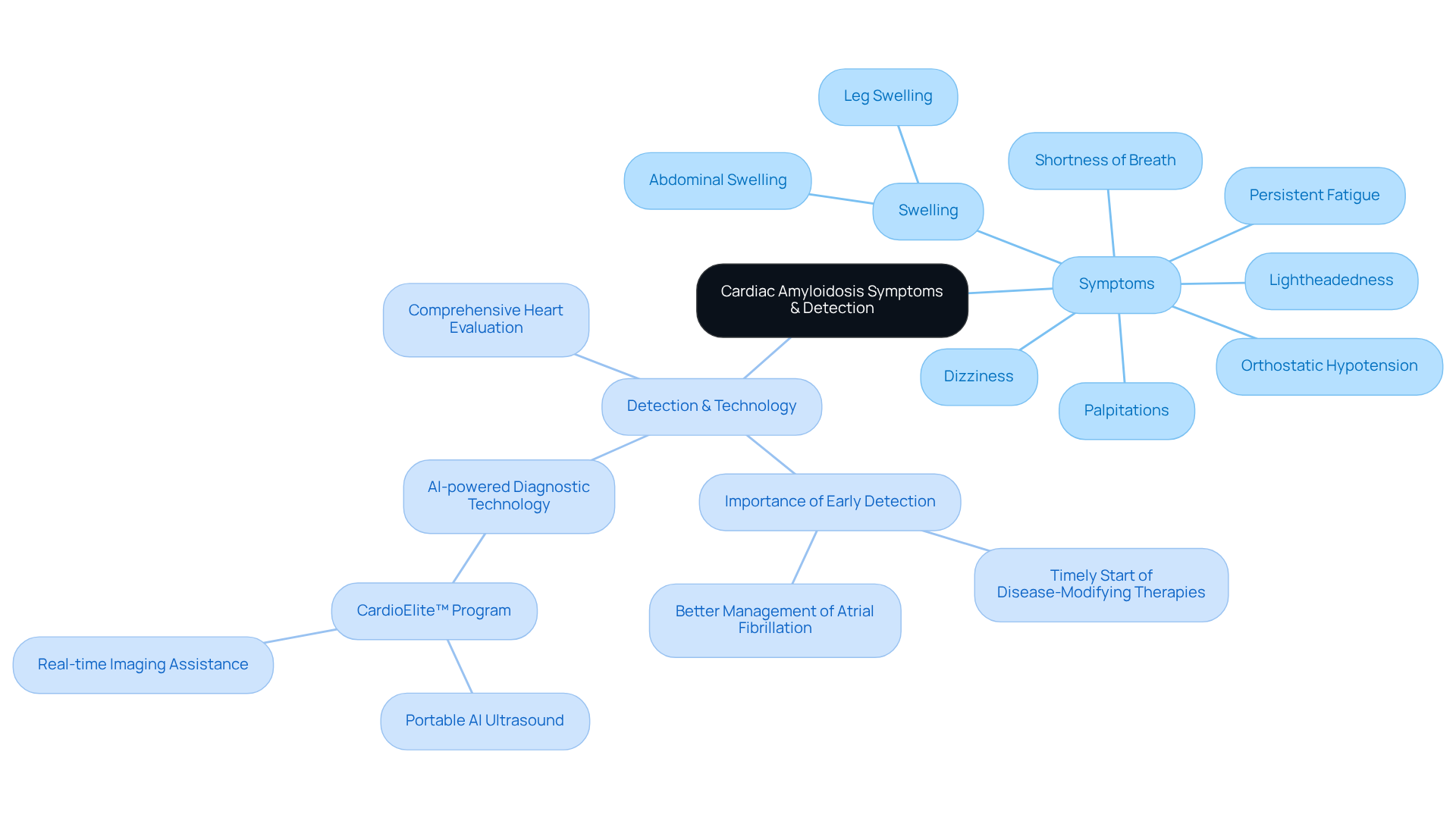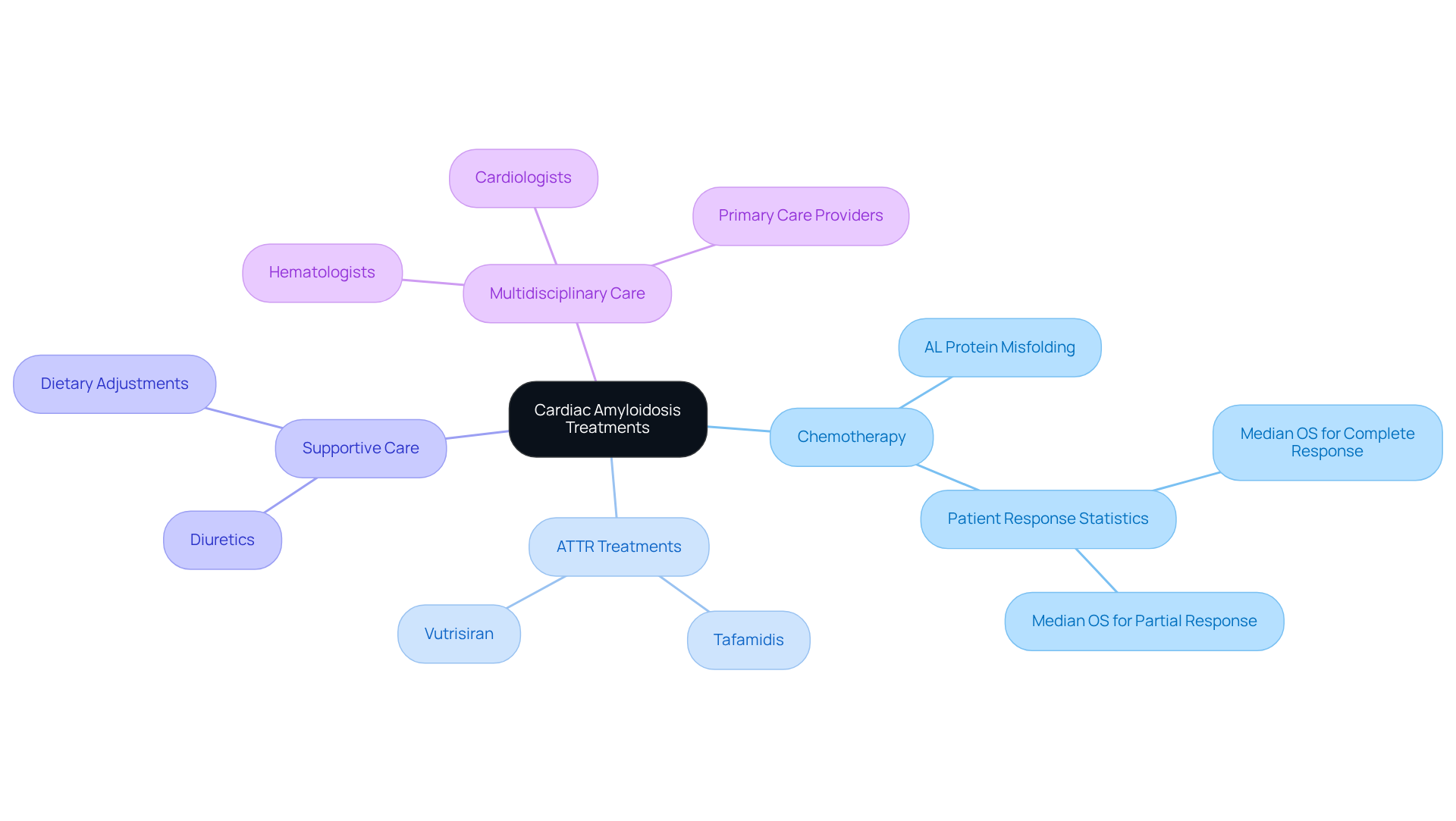


Cardiac amyloidosis can be a daunting diagnosis, especially for our elderly loved ones. This serious condition involves the buildup of abnormal proteins, known as amyloid, in the heart tissue. As a result, it can lead to heart stiffness and impaired function, which understandably raises concerns for patients and their families.
Early diagnosis and intervention are crucial in managing this condition effectively. Thankfully, advancements in treatment options are available, and a multidisciplinary approach can help manage symptoms and improve patient outcomes. In addition to this, having a supportive healthcare team can make a significant difference in navigating this journey.
If you or someone you care about is experiencing symptoms, it’s important to reach out for help. Remember, you are not alone in this. There are resources and professionals ready to support you every step of the way. Together, we can work towards better health and a brighter future.
Cardiac amyloidosis is a complex and often overlooked condition that poses significant risks, especially for our elderly loved ones. This disorder, marked by the buildup of abnormal proteins in the heart, can lead to serious complications like heart failure and arrhythmias. It’s crucial for both patients and caregivers to understand the nuances of cardiac amyloidosis, as early detection and intervention can greatly enhance outcomes.
What challenges do patients face in recognizing symptoms? Many may not realize the signs or may dismiss them as part of aging. Accessing effective treatments can also feel daunting. It’s essential for healthcare providers to bridge this gap in care for this vulnerable population, ensuring they receive the support they need.
In addition to this, fostering open communication can empower patients to voice their concerns and seek help. Remember, you’re not alone in this journey. Together, we can navigate the complexities of cardiac amyloidosis and work towards a healthier future.
What is cardiac amyloidosis is a serious condition that can be concerning for many. The condition characterized by the buildup of abnormal proteins, known as amyloid, in the heart tissue is what is cardiac amyloidosis. This buildup can lead to thickening of the cardiac walls, making it harder for the heart to pump blood effectively. This condition, known as what is cardiac amyloidosis, is often linked with restrictive cardiomyopathy and can cause the heart to become stiff, hindering its ability to fill properly with blood.
There are two main types of deposits in what is cardiac amyloidosis:
Understanding what is cardiac amyloidosis is crucial, especially for older individuals, as it can significantly impact their overall health and quality of life.
Recent studies have shown that survival rates for systemic light chain (AL) conditions have improved significantly due to advancements in treatment. This highlights the importance of early diagnosis and intervention. Have you or a loved one been feeling unwell? It’s essential to seek help early on.
Real-world examples, like that of Marc Israel, who extended his life through timely treatment, illustrate the potential for positive outcomes. Cardiologists emphasize that while current treatments can stabilize the condition, ongoing research is focused on developing even more effective therapies. This is a hopeful message for patients and their families.
If you’re feeling anxious about your heart health, remember that you’re not alone. There are caring professionals ready to support you. Reaching out for help can be the first step toward improving your quality of life. Your health matters, and understanding your condition is key to managing it effectively.

Cardiac conditions can be concerning, particularly when they relate to what is cardiac amyloidosis, which involves the production of abnormal proteins leading to serious health complications. For instance, in AL protein deposition disease, this issue arises from the excessive production of light chains by plasma cells, often linked to multiple myeloma, a type of blood cancer that tends to affect older adults. On the other hand, ATTR condition is associated with mutations in the transthyretin gene, resulting in misfolded proteins. Age-related ATTR occurs when the transthyretin protein becomes unstable, forming amyloid fibrils that can accumulate in the heart and other organs.
Several crucial factors contribute to the progression of both AL and ATTR conditions:
Notably, a recent study found that 8.3% of individuals with recent-onset atrial fibrillation were diagnosed with what is cardiac amyloidosis, which highlights the importance of screening in this population. Furthermore, persistent atrial fibrillation was observed in 90% of individuals with heart disease, compared to 49.5% of those without, underscoring the clinical significance of this arrhythmia.
At Amavita Heart and Vascular Health, we truly understand the importance of early detection and management strategies, particularly for those at higher risk. Our advanced imaging capabilities and comprehensive assessments are designed to support high-risk patients, ensuring that conditions like heart-related disorders are identified and managed effectively. As Dr. Pascual-Figal pointed out, understanding what is cardiac amyloidosis and recognizing ATTR-CA early in these individuals can lead to better management, the initiation of disease-modifying therapies, and ultimately improve their prognoses.
If you or a loved one are experiencing any symptoms or have concerns about heart health, please don’t hesitate to reach out. We’re here to help you navigate these challenges with care and compassion.

Recognizing the signs of this condition is crucial, especially since they often resemble those of heart failure, which can complicate early diagnosis. Common symptoms include:
As the condition progresses, symptoms can worsen, potentially leading to arrhythmias and murmurs.
Did you know that about 8.3% of individuals undergoing echocardiograms show signs of heart conditions? This makes it even more important for older adults to pay close attention to these signs and promptly inform their healthcare provider of any changes. Early recognition of ATTR-CA can lead to better management of atrial fibrillation and allow for the timely start of disease-modifying therapies, which can significantly improve treatment outcomes and enhance overall quality of life.
In addition to this, Amavita's recent advancements in AI-powered diagnostic technology, particularly through the CardioElite™ program, highlight the importance of early detection. This program features a portable, FDA-approved AI ultrasound that provides real-time assistance for accurate imaging and generates reports on cardiac structure and function within minutes. Such capabilities improve screening accuracy for heart-related amyloid disorders, allowing healthcare professionals to better understand what is cardiac amyloidosis and intervene promptly, leading to better prognoses for patients.
Furthermore, Amavita's comprehensive heart evaluation process supports early detection and personalized care strategies, aligning with a preventive cardiology approach aimed at reducing heart attack risk. Remember, you are not alone in this journey; reaching out for support can make a significant difference in your health and well-being.

When discussing what is cardiac amyloidosis, the focus is on managing symptoms and addressing the root causes of amyloid accumulation. For those facing AL protein misfolding disorder, chemotherapy might be necessary to help reduce the production of abnormal light chains. Research shows that individuals who achieve a complete response or a very good partial response enjoy a median overall survival of 74.7 months, which is significantly better than the 52.5 months seen in those with partial responses.
In cases of ATTR amyloidosis, treatments like tafamidis, which stabilizes the transthyretin protein, have been approved and are making a real difference in patient outcomes. Recent advancements, including the approval of vutrisiran, have transformed how we manage this condition, leading to substantial improvements in survival across all stages of the disease.
Supportive care is also crucial. This includes using diuretics to manage fluid overload and making lifestyle changes, such as reducing sodium intake through dietary adjustments. In more advanced cases, organ transplantation may be an option worth considering.
A multidisciplinary approach is essential for providing comprehensive care to elderly individuals facing this complex condition. Cardiologists focus on heart function, hematologists manage blood-related issues, and primary care providers coordinate overall health. This teamwork ensures that elderly patients receive tailored treatment plans that cater to their unique health needs.
However, it’s important to acknowledge the challenges. Only about one-third of elderly patients complete the planned six cycles of chemotherapy, highlighting the need for careful monitoring and support throughout their treatment journey.
If you or a loved one are navigating these challenges, remember that you’re not alone. Reach out for support and guidance; there are caring professionals ready to help you through this.

Cardiac amyloidosis is a serious condition that can be quite overwhelming, especially for our elderly loved ones. It involves the buildup of abnormal proteins in the heart, leading to significant health challenges. Understanding this condition is crucial because early detection and intervention can make a real difference in patient outcomes and overall quality of life.
Throughout this article, we’ve shared important insights about cardiac amyloidosis, including its types, causes, symptoms, and treatment options. We highlighted the differences between AL and ATTR types and stressed the importance of recognizing early warning signs like shortness of breath, fatigue, and swelling. Furthermore, advancements in treatment options, such as chemotherapy for AL and stabilizers for ATTR, show promising progress in managing this condition. It’s also essential to acknowledge the role of multidisciplinary care, which provides comprehensive support to patients.
Ultimately, being aware of cardiac amyloidosis is vital for improving patient care and outcomes. It’s important for individuals, particularly older adults, to stay vigilant about their heart health and seek medical advice if they notice any symptoms. Engaging with healthcare professionals can lead to timely interventions and a better quality of life. Remember, proactive health management is key to navigating this challenging condition.
So, if you or someone you care about is experiencing any concerning symptoms, don’t hesitate to reach out for support. You’re not alone in this journey, and there are resources available to help you every step of the way.
What is cardiac amyloidosis?
Cardiac amyloidosis is a serious condition characterized by the buildup of abnormal proteins, known as amyloid, in the heart tissue. This buildup can lead to thickening of the cardiac walls, making it harder for the heart to pump blood effectively.
What are the main types of cardiac amyloidosis?
The two main types of deposits in cardiac amyloidosis are AL (light chain) type, which is associated with plasma cell disorders, and ATTR (transthyretin) type, which can be hereditary or related to aging.
Why is understanding cardiac amyloidosis important?
Understanding cardiac amyloidosis is crucial, especially for older individuals, as it can significantly impact their overall health and quality of life.
How have survival rates changed for systemic light chain (AL) conditions?
Recent studies have shown that survival rates for systemic light chain (AL) conditions have improved significantly due to advancements in treatment, highlighting the importance of early diagnosis and intervention.
Can cardiac amyloidosis be treated effectively?
While current treatments can stabilize the condition, ongoing research is focused on developing even more effective therapies, offering hope for patients and their families.
What should someone do if they are feeling unwell?
If you or a loved one have been feeling unwell, it is essential to seek help early on, as timely treatment can lead to positive outcomes.
How can support be accessed for those anxious about heart health?
Individuals feeling anxious about their heart health can reach out to caring professionals for support, which can be the first step toward improving their quality of life.